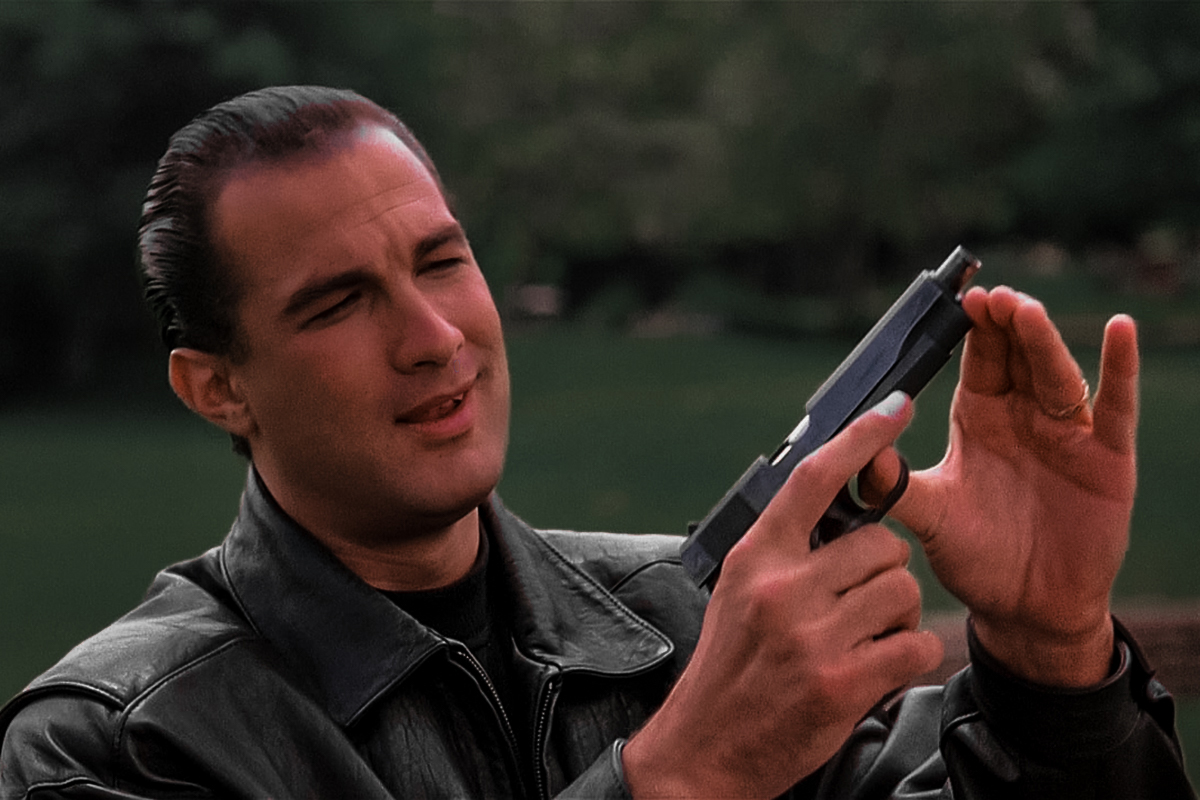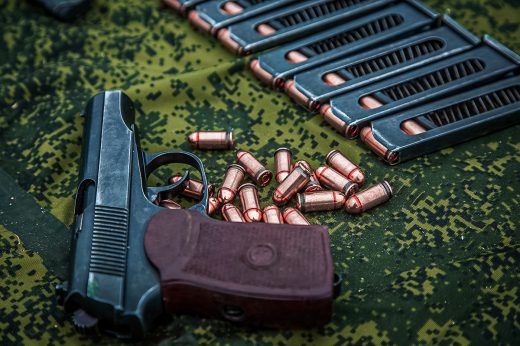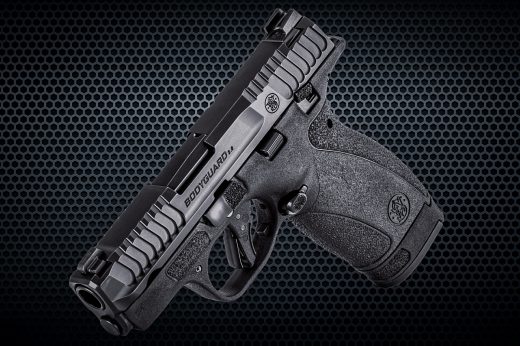We all know what a press check is, or at least we should. When loading a semi-auto handgun, or during the process of checking its readiness, you partially pull back the slide or bolt and visually verify that there is a round in the chamber. It’s a simple enough concept.
But you would be surprised at how virulent the arguments about this simple action can be. How did it originate? You’ll hear people say it came into practice because 1911s sometimes unreliably stripped a first round off a magazine if you closed an open slide on a fresh mag. Most people who repeat this may or may not be Glock, SIG, and H&K fans.

These days, everybody does it with all kinds of pistols, and they should. Knowing a firearm reliably chambered a round is essential in making sure a firearm is ready to be used if needed.
Then, there are arguments about the best way to perform a press check. Do you grab the slide at the rear? Many gunmakers include slide serrations near the muzzle standard these days — there was a time when that was a custom mod — since many shooters prefer to grab the side there when performing a check. These days, a lot of people just use their pistol’s red dot to pull the slide back a little.
There’s also the one-handed press check, which probably isn’t safe, can lead to a dropped gun, and may have a higher probability of leaving the gun out of battery if you don’t give the slide a tap afterward, but it sure looks cool. (It’s reasonably safe using a pistol with a significant beavertail, but you’ll look like an asshole trying to be cool.)

But what about the Michael Mann 1911 press check?
I call it that because when Michael Mann got obsessed with modern firearms techniques and started putting them in movies, this weird press check must have been in vogue with a select few firearm instructors in the film biz. A lot of people call it the “Steven Seagal press check,” because he does it in more than one movie. But it may have come from the most famous firearm training school in the country.
Some people blame Col. Jeff Cooper, the founder of Gunsite Academy, for this method. According to this old video below and the press check procedure performed by an early Gunsite Academy instructor (it was called the American Pistol Institute back then) numerous times, there could be something to this.
This instructor also removes the round from the chamber in a way that many would consider unsafe today — by covering the ejection port while pulling the slide back so the round ejects right into the hand.
RELATED – That Time Hunter S. Thompson Stole Hemingway’s Elk Antlers
Some say that if the slide slips while doing this, there’s a chance the round could hit the firing pin and discharge, causing injury to the hand. The probability of this will also trigger arguments.
The Steven Seagal / Michael Mann / Jeff Cooper Press Check Method
The press check method in the old Cooper video above only works with 1911s that have standard-length guide rods, not full-length, because the latter wasn’t really a common thing yet for 1911s.
Here’s how it goes, assuming you begin with a chambered pistol with a cocked hammer and the thumb safety engaged:
Disengage the thumb safety and hook the tip of your left thumb (if you’re a righty) in the trigger guard, place your left index finger on the bushing and plug under the barrel, and squeeze This will open the slide enough to visually determine if brass in the chamber.

Now, the modern gun safety brain immediately sends up red flags at almost all of this. Put a finger inside the trigger guard when you’re not preparing to fire? No. Put part of your hand very, very close to the muzzle at the same time as having another finger in the trigger guard on a gun that’s supposed to be chambered? No, and no.
But don’t get upset. Nobody really does this kind of press check anymore in the real world, and the only time it comes up is when somebody sees it in an old movie and puts up a “WTF Is This Shit?” post somewhere.
But, yeah, this was a thing in the gun world — briefly.
Try it with some snap caps. It’s interesting and doesn’t feel super unsafe, but it won’t work if your 1911 has a full-length guide rod or if it’s a bushingless design.
Other than obviousl safety concerns, that’s really why this method of press check is completely outdated and all but useless — it only works safely with some 1911s or a similarly designed firearm, and of those, there are not many a couple decades into the 21st century.
Plus, there are plenty of other nearly universal press check methods that work just fine on almost any pistol while not breaking several rules of firearm safety and endangering digits.
Still, this is a curious bit of handgun training history that will likely live on for a while, thanks to it being committed to film several times. And no, not because Seagal does it in Under Siege (1992), but because you also see it in Michael Mann’s crowning film achievement, Heat (1995), a classic heist movie that should and will live on for a long while.
Al Pacino’s LAPD Lt. Vincent Hannah uses this press check a couple of times with his Officer’s length 1911, most notably in the elevator when he and Casals (Wes Studi) are prepping to break down a door in a loud and aggressive manner.
According to imdb.com, “The cast was given weapons and tactics training by former British Special Air Service members Andy McNab and Mick Gould. Gould has a cameo as one of the cops who breaks into Henry Rollins’ flat.”
So maybe this was more of a British special forces thing than anything else. The fact that it may have been a Jeff Cooper thing is even more disconcerting because that guy pinned the grip safety to delete it on his 1911s.
The funny thing is, every actor who uses this unsafe press check otherwise seems to have an excellent two-handed grip with stacked thumbs, not something you saw much of in movies from the 1980s and 1990s. This indicates the rest of their training was solid.
But most importantly, you’ll also see James Caan using the press check in question with his custom 1911 in Mann’s earlier film, Thief (1981), which many say was his first swing at what he perfected with Heat. But Caan wasn’t trained by some British dudes — he went to, you guessed it, Jeff Cooper’s American Pistol Academy, which became Gunsite Academy, for firearms training in prep for the role.
Caan reportedly took a three-day crash course with instructor Chuck Taylor because Cooper didn’t think a thief like Caan’s character realistically would receive the kind of training his school offered.
It’s unlikely Caan picked up this press check method anywhere else, so instructors at Cooper’s school must have been teaching it, at least for a time.

And then, yes, we have Seagal doing this in several movies as he almost always carried 1911s in his movies until his career descended into the direct-to-free-streaming-service movie hellscape where it currently resides.
So there you have it. If you ever see this in a movie, you know what it is, and if you ever see anyone at the range doing the Michael Mann Press Check, or — if you must — the Steven Seagal Press Check, you know to move a couple of lanes over.
And if you haven’t seen Thief from 1981, check it out. It’s a seriously underrated movie, and you can see a lot of the seeds of what became Heat. And there’s something about the dark-of-night footage in this film — it looks real in ways few night scenes do.
Thief also features a host of cool firearms, especially for the time. The pistol Caan carries throughout the movie is a 6-inch longslide M1911A1 suped-up by California gunsmith Jim Hoag, likely built on a Colt Gold Cup National Match.
The slide was obviously lengthened, the trigger guard was squared, and it got an aftermarket adjustable rear sight, a skeletonized hammer, and a beavertail grip safety — those were all custom mods back then. (Every once in a while, the pistol turns into a shorter 1911 due to continuity errors.)
Caan uses a nice two-handed grip with stacked thumbs that you didn’t see much in movies back then. You certainly didn’t see it in action movies of the 1980s, and in the 1990s, everyone was doing the teacup grip for some ungodly reason — Pierce Brosnan was a huge offender here in all of his James Bond movies.
Carl (Dennis Farina in his first acting gig) uses one of those wild 1980s guns that you can’t believe was real, a High Standard Model 10 bullpup semi-auto shotgun. It was kind of Frankensteined by two companies from a Remington 870 and then marketed only to law enforcement, which found it — lacking.
Still, they got it to work long enough to film the final shootout in Thief, and it looks pretty wild.
READ NEXT – Want to Shoot a Machine Gun? Best Full-Auto Ranges in the U.S.










Comments